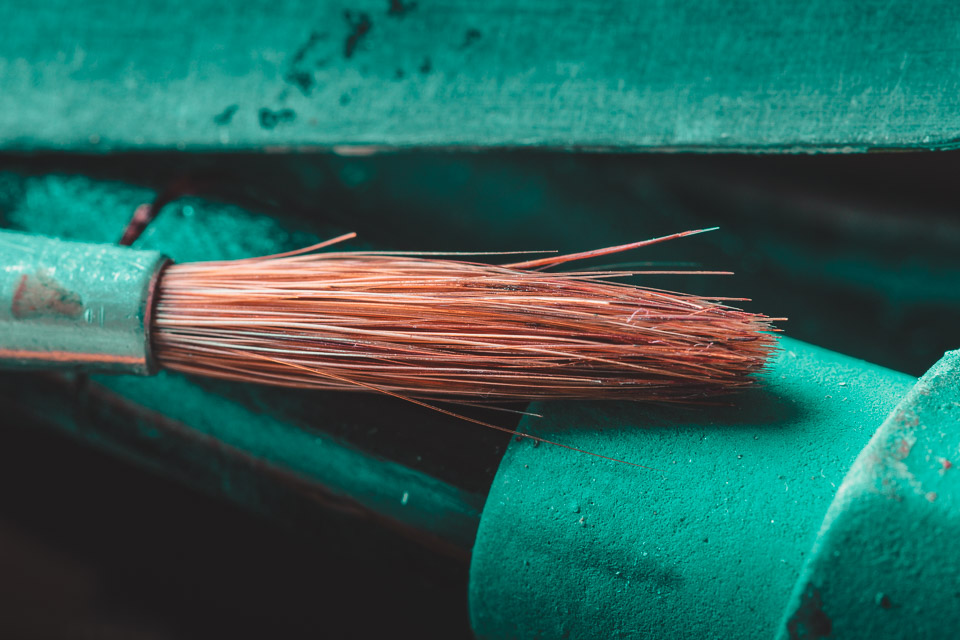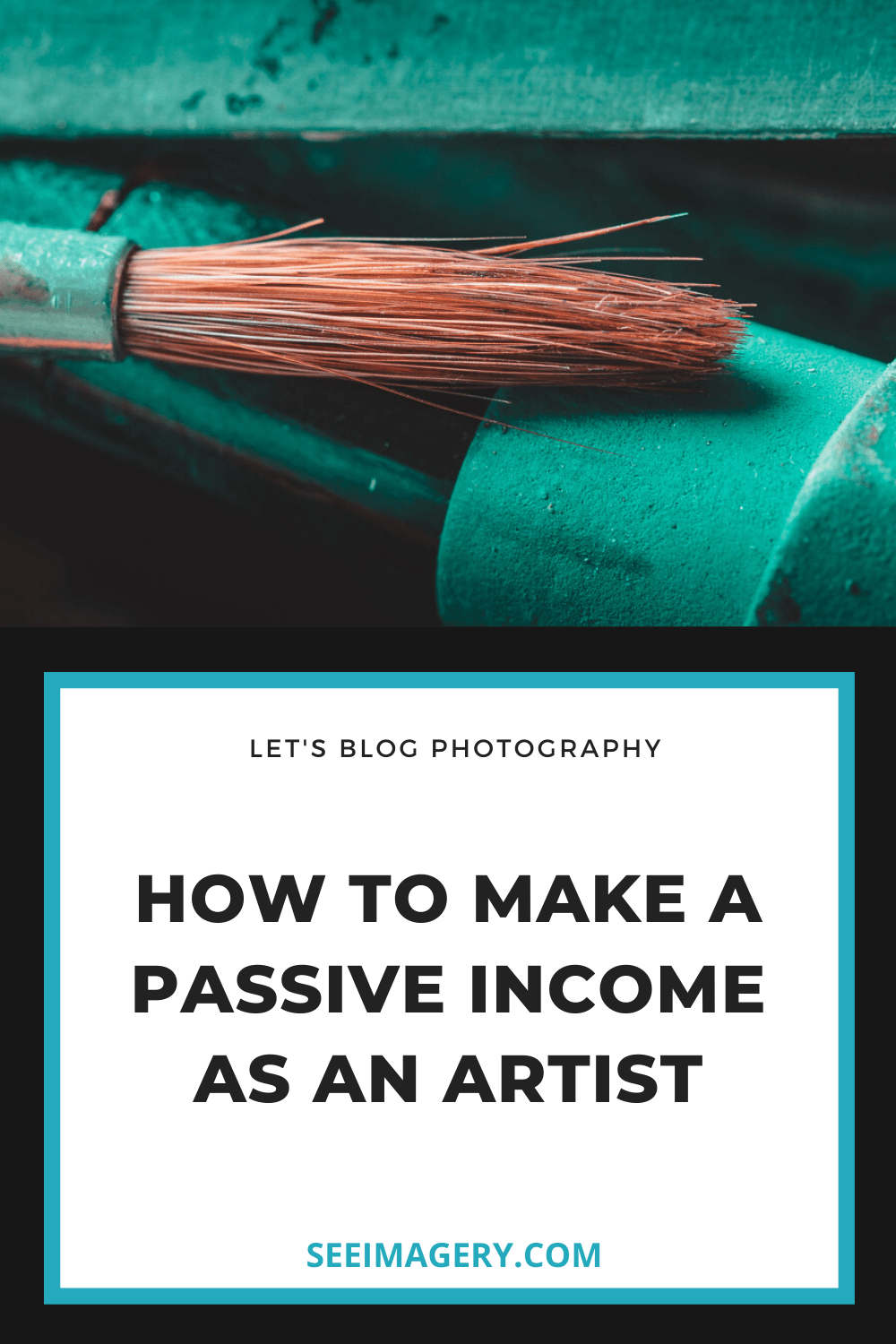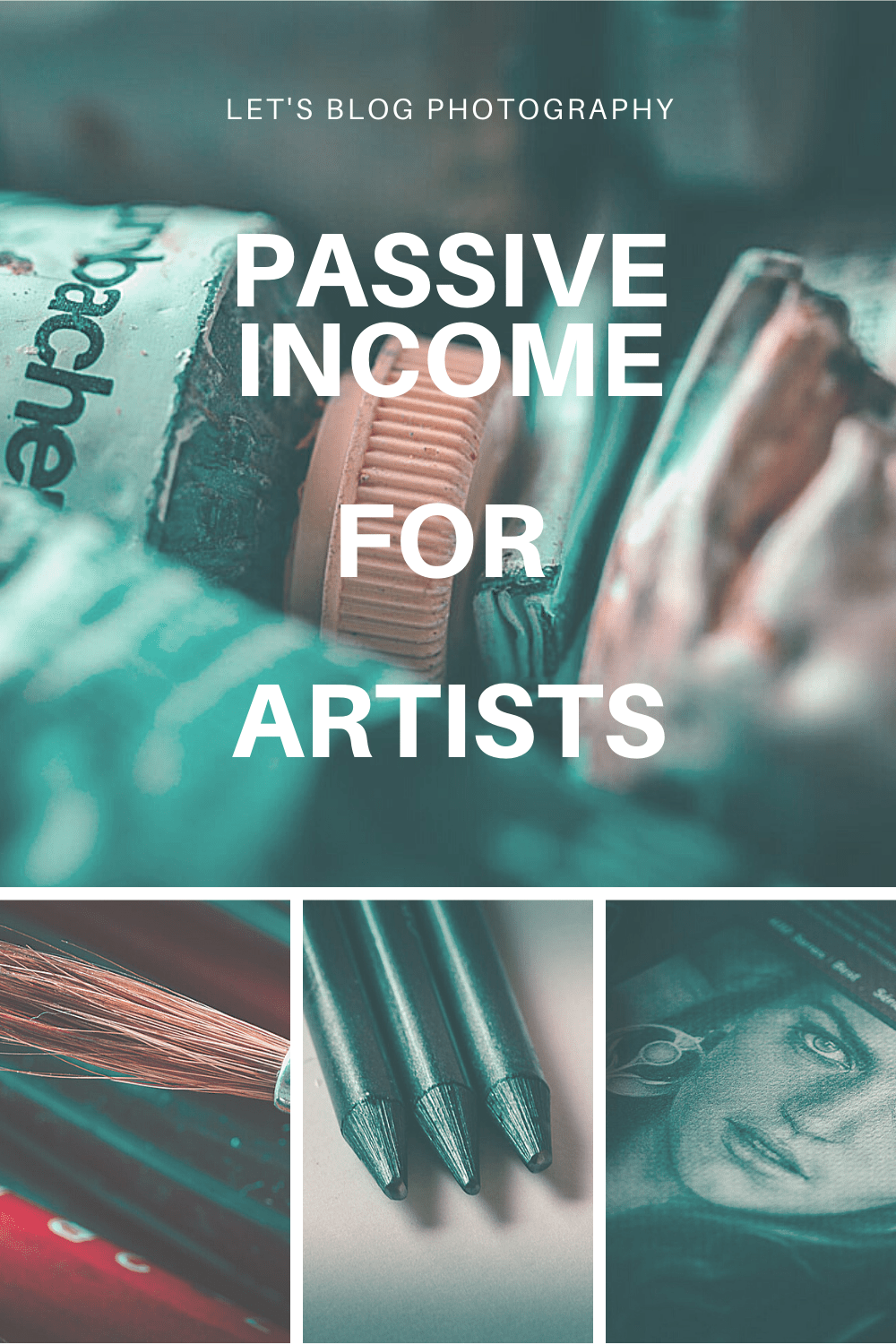Passive Income for Artists
Are you an artist? Do you find yourself thinking, how can a creative person make money? If you are a creative person, wondering how to start earning money as an artist then this article is for you.
Surely, you have heard the term starving artist. Is that you? Are you waiting for the next big project to fund your creative ambitions and financial commitments for the next couple of months?
What if I told you there is another way!
Make Money doing what you Love
How do Artists make money?
First, let’s briefly look at the traditional method. Most freelance artists work on a commission basis. This is true if you are a photographer, painter, illustrator, graphic artist, or other creative. You accept a job and upon completion receive compensation for your efforts.
Typically, once the job is over so is the payoff. There is no more money coming in from your initial work efforts. You have to go find another job or client and the process repeats.

How to Make Money as an Artist Online?
Many artists use the same principles when establishing their online presence. The goal, they believe, is to simply market themselves, attract more clients, and repeat the initial work for commission model.
Unfortunately, their portfolio website is usually just a picture book. Worse, it’s rarely updated and doesn’t end up reflecting any of their current work.
If you created a portfolio website but it’s out of sight, out of mind then guess what. It’s also out of sight when it comes to ranking in Google search results.
If your portfolio/website is attracting clients then great, more clients equals more money. Still, why are you not make the most of your online presence?
This is where the idea of passive income streams for artists comes into play.

What is a passive income stream?
According to Dave Ramsey’s blog, passive income is the following.
Passive income is money you earn in a way that requires little to no daily effort to maintain. Some passive income ideas—like renting out property or building a blog—may take some work to get up and running, but they could eventually earn you money while you sleep.
Did you read that? Make money in your sleep!
No this isn’t some crazy get rich scheme where you barely lift a finger and the money just piles in. It’s the opposite. You are going to do a lot of work but the work is evergreen.
This means the work you do today can earn you money today, but also tomorrow, next month and 10 years from now.
It’s the opposite of paid client work where almost always, the trail of money ends after the work is complete. Instead, your work lives, breathes, and engages new people every day, even when you are asleep.
What Work – What are these passive income ideas for artists?
There really is a sea of possibilities including art licensing, coffee table art books, eBooks, instructional classes/videos, and stock websites. You can even sell your art through print-on-demand merchandise, wall art, etc.
These are great options but I’m not going to talk about any of them. Instead, I’m going to talk about the one option that would benefit you whether or not you did one, none, or all the above options. I’m going to talk about creating a blog.
This is exactly how I earn a passive income as an artist here on See Imagery.
In fact, this is how many creatives make money utilizing their artistic skills. Take Andrew Tan of Tangible Day who recently wrote an article for us.
On his own blog, Tangible Day, Andrew not only documents his love for assembling and painting miniatures but also photographing them.
By simply documenting a passion he already enjoys he is able to reach, connect, and cater to an audience of likeminded individuals. Through the common good of sharing, he establishes a report and builds an audience.
You can read the article Andrew wrote for See Imagery here, Do Photographers really need to Blog? In the article, Andrew highlights 10 reasons Photographers should blog.
He delves deeper than monetary reasons. He really gets to the core of what a blog represents. Credibility, growth, inspiration, and the space to embrace unforeseen opportunities.
How can you turn your Artistic Skills into passive income?
If you’re still reading then I know you can do this, you are determined! Later, I’m going to direct you to my post series on How to Create a Blog using WordPress. It will guide you through the entire process.
But that is not the scope of this post. The scope of this post is to show you how to make a passive income as an Artist. Why does it work? What is the strategy? Where does the money come from?
You’re not alone. Many people don’t understand how a blog can truly help grow their business or turn a hobby into a source of income. If they do understand the potential, they’re not sure how to go about implementing it.
I’m going to break it down into 2 simple steps, Build an Audience and Sell them Stuff. I first heard this simple phrase from Derek Halpern of Social Triggers. I know, it sounds too easy but let me explain why it makes sense.

Step 1: Build an Audience
Without an audience, you’re just speaking to an empty room. Have you ever tried networking with random strangers? It doesn’t work, you’re lucky to even get a response.
With an audience, networking becomes much simpler. Selling and earning a passive income can be as easy as sending an email. Your audience can even lead to lucrative speaking engagements, book deals, and other unforeseen opportunities.
It doesn’t even have to be a large audience if it’s composed of the right people. But that is the key, you need to target the right people and build a report with them.
Who is your target Audience?
The first question you need to ask yourself before you begin to build an audience is whom do you want sitting in the seats? This is an important and often overlooked step.
If you don’t take the time to define your audience you can end up blogging for the wrong crowd. It sounds ridiculous but it happens all the time. Take the following example.
Jen is a photographer trying to attract new clients. She also has a blog on her portfolio/website. When a potential client shows up to Jen’s website, they decide to check out your blog.
They find posts like, “How to charge more for your photography, 10 Selling Mistakes Photographers Make” and “How to Handle Every Difficult Photography Client EVER.”
In our example, this photographer is blogging for industry professionals and not the clients she hopes to attract. If this photographer wants to teach photography business practices then she should have a separate website to target this audience.
Unbelievably this is a common mistake and I talked about this in another post, Ten Photography Blogging Mistakes to Avoid.

How to define your Audience
Ask yourself, what do I want to blog about, and then, who are the people that care about these things? One exercise I found on Social Triggers, suggest you make a 2-column list. In one column are all the things you want to blog about. In the second column are the people that care about these things.
This will help you narrow your audience down. Blogging is hard and it’s even harder if you decide to target an audience that is too broad.
For example, it’s much better to blog about a unique style of painting then it is to blog about painting as a whole. It’s just easier to be discovered and gain a foothold in Google.
Here is an example for my blog here on See Imagery. In my first column, the topics I wanted to blog about include photography, blogging, WordPress, and motivation.
In my second column, I list the people that care about these things. Feel free to list multiple types of people.
In the end, I defined my target audience as “Photographers who blog using WordPress. Photographers lacking motivation stuck in a creative rut and need encouragement. And, Photographers who might want to start a blog.”
That was me, a photographer stuck in a creative rut and unsure what to do with myself. I like to write as well so through blogging I am exploring two passions at once, photography and writing.
This has led to me helping people, meeting a ton of new people with similar passions, and ultimately, finding the motivation I was seeking.
Also, even though I narrowed my niche down to photographers who want to blog I still left the door open for me to blog about photography in general. Learning photography, practicing photography, are all things I can still blog about without throwing a curveball to my audience.

I’m not an expert though, why would anyone want to be part of my audience?
Hell, me either. I’m surely not the best photographer in the world nor am I the best blogger. There are so many amazing photographers out there! I don’t even stand a chance but here is the thing.
No other photographer or blogger has the same stories, experiences, and perspective on life as I do. They don’t share and convey information and ideas the same way I do.
This could be for better or worse but because you’ve read this far I’m assuming you find my style relatable. That’s the thing, we all have a story and we all have a unique style in conveying that story.
Some people will find you relatable, some people won’t. I’ve read the blogs of some amazing photographers but didn’t find them relatable. Maybe it was their style, maybe they were just too far in their journey and I was just so far behind.
Realize where you are in life and own it! If you can say, hey, I’m just like you, hear is my goal, I’ll share the journey then you can reach someone no matter where you are on the journey!
And here is the crazy thing. One day, you may wake up and realize something. Somehow, you’ve become the expert!

What about my Social Media Audience, isn’t that good enough?
If you want to leverage the power of an audience then you need to own that audience. If you try to grow your audience on a platform you don’t own then you have no control.
You do not own your audience on Facebook, Twitter, Instagram, etc.
You have no control over the fate of these platforms nor how they operate. Furthermore, every platform goes through several algorithm updates over the years and many times, not in your favor.
Take Facebook Pages for example. Once upon a time, they were great but it’s been increasingly harder and harder for these same pages to reach their followers.
Ultimately, Facebook and these other social media platforms are in control and can change the rules anytime.
How do you Own Your Audience?
By creating a website using WordPress.org, purchasing hosting, and buying your own domain name. I recommend WordPress.org and not WordPress.com or some of the other website hosting/building solutions because they offer you the most freedom. Read more on that here.
Once you have your blog up and running this will now be the source of all operations. This is home base and the reason you exist on all these other social media platforms.
Ultimately, you want to drive that traffic to your blog, a place where you’re in control. Your content lives and breathes here. Alongside that content will be your email signup form.
[mailerlite_form form_id=2]At every turn, your goal is to encourage and offer some type of value to get people onto this email list. Hey go back up there and get on my list, I’m serious!
Once they sign up, they invest in you as a human, blogger, associate, and friend. Make sure you treat them that way, like friends because they are the people that will support you.
This list makes up the core of your audience. They trust and listen to you as long as you invest something into the relationship.
Give, give, give, and when the time is right, you sell them stuff.
Step 2: Sell them Stuff
No, not just any stuff, but the stuff you find valuable. The stuff you find helpful and most importantly, the stuff you think could help someone achieve their goals!
This is the part where most people thinking about blogging click the close browser button and feel discouraged. I don’t have anything to sell they think, I’ll have to think about it for a while.
Then they think about it for two years and nothing happens, no blog, no product, and no action. Instead, they end up with a whole bunch of time doing nothing interrupted by some occasional thinking.
If I bring up all the stuff we talked about earlier like art licensing, coffee table art books, eBooks, instructional classes/videos, print-on-demand merchandise, stock images, or wall art they feel even more discouraged.
That stuff just seems far away. I don’t know what to pick. I don’t have time especially if you want me to commit time to a blog too, it’s just too much.
On top of all that, at some point, they’ve probably run into someone saying, “If you don’t have a product, you don’t have a business.” I feel this statement is wrong and here’s why.

Information is Your Product
Your information is a product! It’s not the end product, but for now it will do. Commit time to creating information that helps people solve problems and I promise you, clarity will come.
Now, what does that mean, clarity will come?
Have you ever heard the expression, “Clarity comes from action, not thought”? It means that all the best ideas come from the process of actually doing the work, not sitting around thinking about what to do.
Clarity comes from action, not thought – Marie Forleo
Stop thinking so much about what to write, sell, and do. You don’t need some master plan or this moment where you feel completely ready, it will never come. You’re just procrastinating, the moment is right now.
Start before you’re ready and let the work guide you. Listen and engage with your audience because ultimately, they will provide you with the ideas for the perfect product. Listen to what the world tells you.
In the meantime, use Affiliate Marketing to earn money and keep you motivated!
Let’s talk about Affiliate Marketing. Affiliate marketing can be the bridge but it can also the destination. Successful blogs can make a fulltime income from affiliate marketing alone. However, this shouldn’t be the expectation, especially when you are first starting out.
What is Affiliate Marketing?
Affiliate marketing is selling other people’s products and earning a commission fee for each sale. The terms and conditions vary with each network. I’ve seen some merchants offer 4% and others offer 50%.
You can’t just assume the 50% is better, however. It depends on your audience. You want to align yourself with merchants and products that your audience will be interested in buying.
You also want to consider the number of possible sales. If only a handful of your customer base is interested in purchasing the product with the 50% commission then it’s probably not worth it.
Would you rather make a thousand $50 sales at 4% commission or 10 sales at 50%? Obviously, the 4% with more sales is the better option here. $50 x .04 = $2 x 1000 sales = $2000 or $50 X .50 = $25 x 10 sales = $250
Now, this is not how all Affiliate Marketing models work. Some places will pay you based on cost per click or even cost per impression.
For example, Google AdSense offers you a commission each time a user clicks on your ad. It also offers you revenue per 1000 impressions or how many times the Ad is simply viewed.

Some Sample Affiliate Programs and Networks you could Join
AdSense – AdSense is a program run by Google where website Publishers can earn revenue through text, image, and video ads. You simply add the code on your website where you want the Ads to appear and Google does the rest.
Amazon Associates – Sure, you probably buy stuff on Amazon all the time. Did you know you could earn money by directing your web traffic there? The best practice is to include post-specific Ads rather than general ads. If you’re talking about a specific light modifier, link to it.
CJ Affiliate Publisher’s Program – Commission Junction is another online advertising company that will connect web publishers with Brands like Olympus, GoPro, CafePress, Zenfolio, and many more.
Clickbank – Clickbank is more about connecting entrepreneurs with other entrepreneurs. Many of the products are digital products, such as computer software and eBooks.
Example 1: Let’s say your product is an online class called Pencil Drawing Made Easy. You sell it on your website but you also list it in the ClickBank Affiliate marketplace.
This allows affiliates to earn a commission from the sale of your product. Sure you don’t make as much per sale as if you sold it on your website but you put the product in front of a new audience.
Example 2: You don’t need a product, you can simply be the affiliate. If you run a blog about art you can advertise the Pencil Drawing Made Easy online classes and make a commission on your sales.
Mediavine – Mediavine is a little different from some of the other programs mentioned, as it is actually a complete Ad manager. You insert a snippet of code into your site and Mediavine will automatically optimize and places Ads across your site.
ShareASale – ShareASale is an affiliate marketing network simply connecting Web publishers to Brands like Blick Art Materials, RedBubble, Easy Canvas Prints, Scrapbook.com, etc.
Affiliate Marketing Example
Let’s go back to Andrew of Tangible Day. In one post, he talks about his favorite workhorse brush for painting miniatures and models. He uses this brush for basing and speed painting. The brush is the Citadel Medium Base Brush.
Yes, you guessed it; the above link to the brush is an Amazon affiliate link. If you or someone visiting my website clicks that link and buys something, I will earn a commission on that sale. There is a catch. They have to buy something within 24 hours of clicking the link.
Notice I said something. It doesn’t even have to be that brush! They could literally click my link, decide they don’t like that brush, and then go buy their dog a new leash and I would still earn a commission.
Setting Expectations for Your Blog
I’m not going to sugar coat it. You will spend the first six months shouting to an empty room with little to show for it.
There is no glory, no accolades, and barely a “hey, good job”. You literally have to do the work because you enjoy it.
At around six months, if you’ve been consistently posting new content, practicing SEO techniques, engaging with other bloggers, and actively seeking your audience you will see growth.
Still, you have to go out and actively find your target audience. Go figure out where they hang out. What social media platform do they like? Who are the bloggers in that space?
Go visit their blogs, leave a comment that adds to the conversation. You want to network in a positive way with these other blogs. Do not spam them.
Keep doing all this and you will see positive growth. Suddenly, you will find yourself checking your Google Analytics account every day. You will be excited to see your traffic growing and all that hard work starting to pay off.

What should you do Now?
Stop thinking about it and do it before you’re ready, start the work and let the process guide you. To begin your blog today simply head on over to my post series, How to Create a Blog, and let’s start already.
If you get stuck we will help you! Join our private Facebook Group: Art, Photography, Blogging, Motivation for free. Of course, I’m in the group but there are others as well. We want to help you!
Use the Comments below and tell me what action you took!
Start a Blog Today
Share these Pins to Pinterest









Leave A Comment